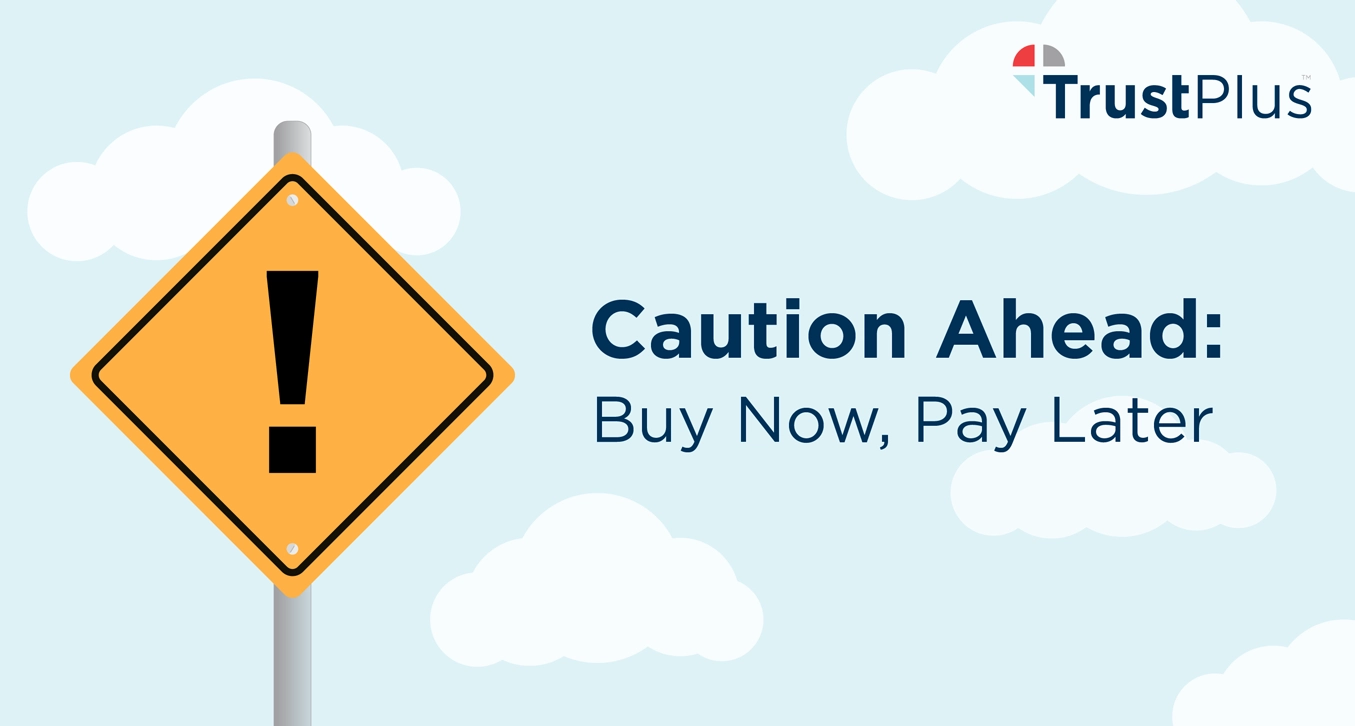Buy Now Pay Later products are used most by financially insecure workers, which can lead to late payment fees, rising debt and employee financial stress. Here’s what your workers should know about Buy Now Pay Later as we head into the holiday shopping season.

Buy Now Pay Later services are surging in popularity.
The Consumer Financial Protection Bureau:
“From 2019 to 2021, the number of BNPL loans originated in the U.S. by the five lenders surveyed grew by 970 percent, from 16.8 to 180 million, while the dollar volume of those originations (commonly referred to as Gross Merchandise Volume, or GMV) grew by 1,092 percent, from $2 billion to $24.2 billion.”
That’s explosive growth since 2019, and it’s far from over.
In 2022, 12% of Americans used BNPL, 14% in 2023, with more adoption on the way, especially as we approach the holiday spending season.
Is this bad news for employers with large swaths of low- and moderate-income workers?
Probably, in terms of rising employee financial stress and its toll on health, productivity, profits, and impact.
Let’s examine the facts.
Why employers should care about Buy Now Pay Later
Why should employers care about Buy Now Pay Later growth?
First, a definition.
Buy Now Pay Later services are defined by the Office of the Comptroller of the Currency as “loans that are payable in four or fewer installments and carry no finance charges.”
But how they play out in the marketplace is murkier as more providers enter the space with a variety of late fees and interest charges.
It’s a burgeoning market which is most attractive to a certain subset of borrowers:
- Your workers who are struggling the most with financial stress.
- They’re the ones most likely to engage with Buy Now Pay Later products and to make late payments.
- These payments can add up quickly, boosting debt and employee financial stress.
TrustPlus Senior Financial Coach Elise Nussbaum, CFP®, CSLP:
Workers, financial insecurity, and Buy Now Pay Later
When it comes to workers, financial insecurity, and Buy Now Pay Later, Gabriella Cruz-Martinez, writing for Yahoo Finance, sums it up:
“Financially fragile consumers — defined as those who have a credit score under 620, fell delinquent on a loan, or were declined for a credit application in the past year — were nearly three times as likely as financially stable consumers to use buy now, pay later (BNPL) five or more times last year, according to new research from the Federal Reserve Bank of New York.”
On its own this isn’t necessarily a problem for you or for your workers, right?
Just because financially insecure workers are using Buy Now Pay Later doesn’t mean that there’s a problem.
Or does it?
The Federal Reserve Bank of New York finds “that the financially fragile are disproportionately likely to use BNPL at higher frequencies and appear to have embraced BNPL as a regular payment option…”
So?
“…our evidence substantiates to some extent a concern expressed by some BNPL critics, that BNPL may attract consumers who already have financial difficulties and are struggling to pay their existing bills and debt payments.”
Sure, but, still, that doesn’t necessarily mean that Buy Now Pay Later is bad for workers struggling with financial insecurity.
Well, actually…
39% of Buy Now Pay Later users made a late payment
39% of BNPL users made a late payment according to The Motley Fool The Ascent’s 2024 Buy Now, Pay Later Trends Survey.
But let’s take these findings with a grain of salt.
As The Ascent notes:
“The percentage of Americans who have missed or made a late buy now, pay later payment shows considerable variation among surveys, with results ranging from 7% to 56% of BNPL users.”
Ok, maybe 56% is bad, especially when one considers the group most likely to make late payments. Guess. Yikes.
Let’s also consider a salient point from Michael Hershfield, CEO of Accrue Savings, as told to Yahoo Finance regarding Buy Now Pay Later:
“It potentially creates a lot of risk on the American consumer, because they might be double dipping on both their credit card debts and using BNPL to pay for things they may not be able to afford…If it’s just replacing credit cards, then it’s no problem, but if it’s compounding the use of credit on Americans that’s a real negative signal to the US economy.”
And to your organization, we would add.
Are your workers familiar with the pros and cons of Buy Now Pay Later?
Here’s what your workers should know about Buy Now Pay Later as we head into the holiday shopping season.
Schedule a time with TrustPlus to discuss reducing employee financial stress and strengthening your financial wellness benefits.
What to know about Buy Now Pay Later
1. Impact on Credit Score
Failure to pay on time will not hurt your credit if your BNPL servicer isn’t reporting your activity to the credit bureaus, but, and it’s a huge BUT, any overdue amounts sent to collections will.
In other words, BNPL will not help you establish or strengthen your credit, but it can harm your credit score.
2. Debt Accumulation
One of the most significant risks of BNPL services is the potential for overspending and accruing debt.
With the ease of making purchases without upfront payment, you may find yourself buying more than you can afford. This can lead to a cycle of debt as you juggle multiple payment plans.
3. Lack of Regulation
BNPL services operate in a less regulated environment compared to traditional lending institutions.
This means fewer consumer protections. Without stringent regulations, you may face high fees, unclear terms, or aggressive collection practices if you miss a payment.
4. Interest Rates and Fees
While many BNPL services advertise interest-free payment plans, this isn’t always the case. Missing a payment can result in steep late fees or interest charges that can quickly add up.
Some BNPL companies may also charge interest on the entire purchase amount if a payment is missed, leading to unexpected costs that can negate the initial appeal of the service.
5. Impulse Buying
The convenience of BNPL encourages impulsive purchasing decisions. The ability to defer payments can create a false sense of security, leading you to buy items you don’t need or cannot afford, by design.
6. Budgeting Challenges
Incorporating BNPL payments into your budget can be tricky. Many people underestimate their monthly financial obligations, leading to cash flow issues.
When multiple BNPL payments are due simultaneously, it can strain an already tight budget, making it challenging to meet other essential expenses like rent, utilities, or groceries.
7. Psychological Impacts
The ease of BNPL can lead to a disconnect between spending and financial reality. You may feel less pressure when making purchases, as the immediate cost is obscured.
This detachment can foster unhealthy financial habits and increase anxiety related to money management.
8. Risks Can Outweigh Benefits
While BNPL services may seem like a convenient way to manage your purchases, the risks associated with them often outweigh the benefits. From accumulating debt and potential damage to your credit score to fostering impulsive buying behavior, BNPL can create financial pitfalls that are hard to escape.
Instead, consider alternative methods for managing your finances, such as budgeting, saving for purchases, or using traditional credit wisely.
By taking an intentional approach to spending, you can build a more secure financial future without the risks that come with BNPL.






